#Hoggar mountains
Explore tagged Tumblr posts
Text

Hiking through the extreme heat of the Ahaggar Mountains.
Algeria
1981
#vintage camping#campfire light#algeria#ahaggar mountains#hoggar mountains#history#hiking#camping#travel#exploring#1980s
36 notes
·
View notes
Text

▪️The Massif de Hogar is a mountain range that rises suddenly to the west of Tamanrassete, Algeria. The region has an average height of 900 meters above sea level, the highest point is Mount Tahat, in the center of Atakor. It culminates at 3,003 meters high, and is also the highest peak in Algeria. The Hogar massif is essentially made up of volcanic rocks and constitutes a vast rocky region within the Sahara desert.
▪️The Hoggar Mountains are home to the Ahaggar National Park, one of the country's national parks. ▪️The Hoggar mountain range typically has hot summers, with a cold climate in winter. Temperatures drop below freezing in winter. Precipitation is rare and sporadic throughout the year. However, because the climate is less extreme than in most other areas of the Sahara, the mountains are an important location for biodiversity, including a number of relict species. The Hoggar Mountains are part of the Western Sahara montane xeric forests ecoregion.
▪️The park also contains a population of herbivores, such as the Saharan subspecies of the Berber sheep and the Dorcas gazelle.
The vegetation in this area includes trees such as Vachellia tortilis, Vachellia seyal, myrtle and Tamarix aphylla which are spread throughout the area. Other plants may include Citrullus colocynthis and Calotropis procera .
▪️The Hogar massif is the land of the Imuagues, a tribe of the Tuareg people. The oasis of Abalassa near the town of Tamanrassete is the site of the tomb of the famous leader Tin Hinan, the matriarch believed to have been the ancestor of the Tuareg people in the Hogar Mountains.
📸 By Дмитрий Дубиковский
165 notes
·
View notes
Text
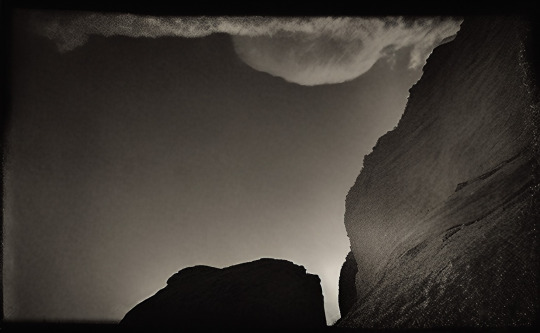
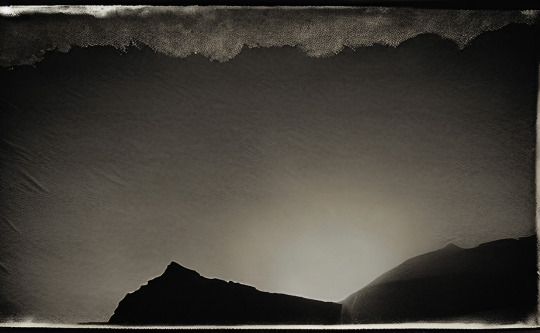
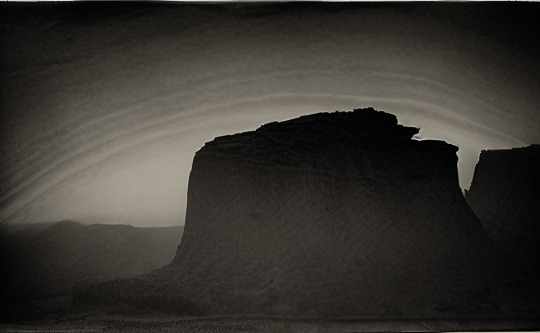
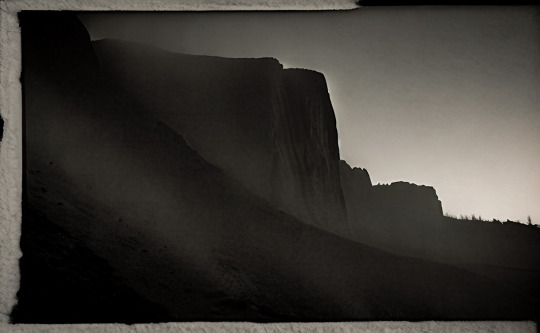
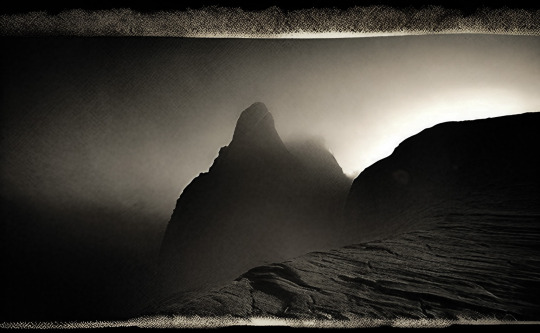

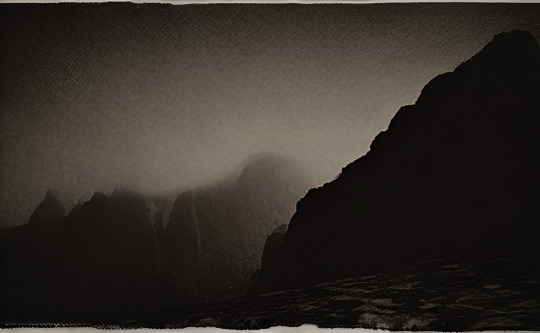
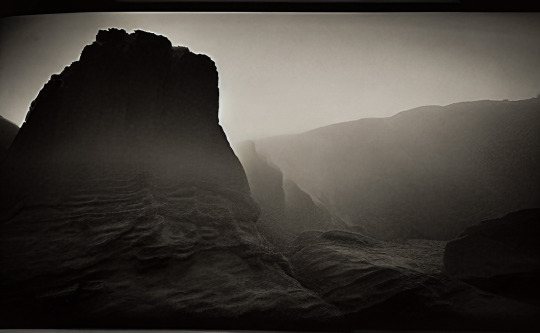
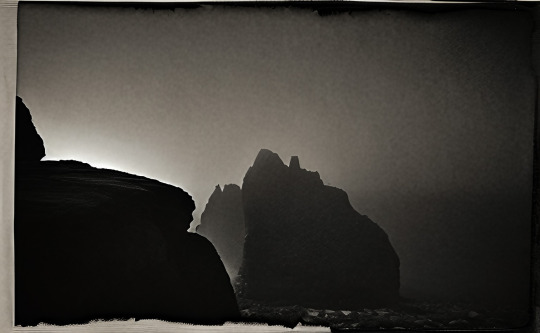
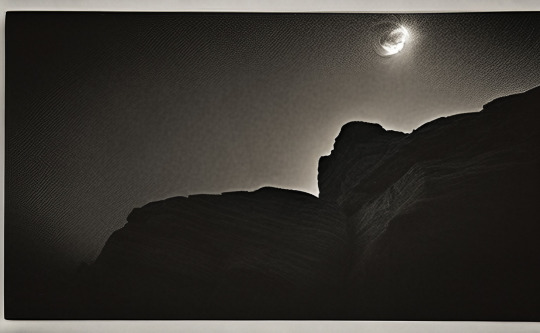
algeria 1982 / 010423
in 1982 i tried to hitch from algiers / algeria
to bamako / mali
i ended up in tamanrasset
remembered images from the hoggar mountains
938 notes
·
View notes
Text
Feels Like Magic: Winx Rewrite World Info Part 1
As the title says! I've been posting my redesigns on my main and here, but I do want to share some important world info!
The biggest one is probably that, while yes, there are other realms, all the main characters' homes and everything are on one planet. Instead of the Great Dragon creating the magical dimension, she (I did change him to a she) made a magical planet. There are many dragon dieties just like the Great Dragon who have made magical planets that are all connected. So there is still travel between planets and realms.
The planet became known as Flaemterna after the Great Dragon since she had taken on that name when the planet was first born, as that is the name her people bestowed upon her. She is a twin to another Dragon Diety who was called the Grand Dragon, who became known as Terra, now more commonly known as Earth. Earth and Flaemterna are actually parallel to each other, but Flaemterna is not visible to anyone on Earth because of its loss of Magic.
There are seven High Kingdoms on the planet. The High Kingdoms are made up of several other kingdoms that they oversee. Somewhat like an empire. Each High Kingdom has a High King and High Queen, and if they have children, the children would be known as High Princess/Prince. Then there are the Mid-Kings and Mid-Queens who run the second largest kingdoms within the High Kingdom. The last level is Kings and Queens/ Low Kings and Low Queens, though if you refer to them as Low it is seen as disrespectful.
So to make it clear:
High King & Queen
-
Mid-King & Queen
-
King & Queen
-
Grand Duke & Duchess
-
Duke & Duchess
-
Marquis & Marquise
-
Count & Countess
-
Viscount & Viscountess
-
Baron & Baroness
-
Lord & Lady
☆☆☆☆☆☆
The Kingdoms are as follows:
High Kingdom Domino:
Capitol Kingdom Domino
Sparks
Hoggar
Koria
Pyros
Ignitia
Island Kingdom Magix
High Kingdom Andros:
Capitol Kingdom Andros
Underwater Kingdom Tides
Glacia
Mire
Coralya
Dolona
High Kingdom Melody:
Capitol Kingdom Melody
Rifftide
Crescendo
Fugue
Aria
Oppositus
High Kingdom Solaria:
Capitol Kingdom Solaria
Nova
Canyon Kingdom Iris
Pleiades
Thordal
Espero
High Kingdom Linphea (Lymphea):
Capitol Kingdom Linphea
Evergreen
Ohm
Altaduna
Serenia
Marshaterra
High Kingdom Titania:
Capitol Kingdom Titania
Zenith
Ephirius
Romulea
White Mountain
Technotitia
High Kingdom Eraklyon:
Capitol Kingdom Eraklyon
Creeto
Havram
Karunda
Herady
Vipotentires
#winx club#winx#winx club rewrite#winx rewrite#feels like magic au#flm lore#winx club bloom#winx club flora#winx club stella#winx club musa#winx club tecna#winx club aisha
23 notes
·
View notes
Text

African Group Who Specialize in Astronomy (The Dogon People of Mali 🇲🇱 )
The Dogon priests said that Sirius had a companion star that was invisible to the human eye. They also stated that the star moved in a 50-year elliptical orbit around Sirius, that it was small and incredibly heavy, and that it rotated on its axis.
What they didn't know was that since 1844, astronomers had suspected that Sirius A had a companion star.
There is a Dogon drawing of the spaceship hovering in the sky, waiting for the Nommo who landed on the Earth. It represents three stages of 'Pelu Tolo' when it is spurting different amounts of blood or flames [as if it crash landed].
They called the Nommo 'Masters of the Water', 'The Monitors', 'The Teachers or Instructors', 'Saviors', and 'Spiritual Guardians'.
I have to wonder if the word 'Nommo' means 'No More' - 'No Longer'.
Dogon art shows grids, perhaps depicting an understanding of the nature of our reality, based on grid programs.
The earliest Egyptians believed Sirius - 'Sothis' - was the home of souls that have crossed over. It is the brightest star in our night sky. This belief is also shared with the Dogon.
The Dogons have described perfectly the DNA pattern made by an elliptical orbit created by the two stars of Sirius as they rotate make around each other. They believe Sirius to be the axis of the universe, and from it, all matter and all souls are produced in a great spiral motion.
The Dogon also claimed that a third star Emme Ya - sorghum female - exists in the Sirius system. Larger and lighter than Sirius B, this star revolves around Sirius A as well. It has not been proven to exist, though some people have called it Sirius C.
Sirius C translated from the Dogon language into English is called the "Sun of Women". It is described by the Dogon as "the seat of the female souls of living or future beings". Its symbol contains two pairs of lines that are relevant features of a Dogon legend. The Dogon believe that Sirius C sends out two pairs of beams and that the beams represent a feminine figure.
Some of the ancient Egyptian temples, such as the Temple of Isis at Denderah, were created so that the light of the helical rising of Sirius would travel down the main corridor to place its red glow upon the altar in the inner sanctum of the temple. When that light reached the altar, the beam of light from Sirius was transformed into Sothis, the Star Goddess, Isis.
In a manner of speaking, the same belief system was involved in the Greek Temples, such as the Parthenon, which were oriented to receive the beams of light from the Pleiades into their inner sanctums, where the beams were then transformed into seven women. As the beams from the Pleiades entered the Egyptian temple of Hathor it became the seven Hathors female judges of mankind.
Within the Dogon tradition, those pairs of feminine figures beamed down from the Star/Sun/Planet of Women to their original home near the Hoggar mountains bringing many aspects of civilization to the ancestors of their tribes.
Dogon oral traditions state that for thousands of years they have known that the Earth revolves around the Sun and that Jupiter has moons and Saturn has rings.
11 notes
·
View notes
Text
i've made the decision to headcanon xiri as algerian/tuareg, mostly bc a white girl on a desert planet makes negative sense but i digress
evidence for this is based on:
e'ronoh's geography being (dare i say purposefully) reminiscent of the swana region
scorpions
mountains, canyons, and dried up riverbeds (all of which are found in sections of the sahara, but particularly the hoggar mountains in algeria)
i think star wars should have an amazigh princess
imagine if this (algerian & tunisian nimcha) was xiri's baneblade:

6 notes
·
View notes
Text

Tifinagh alphabet, from Aghali-Zakara (1993 and 2002): Hoggar (Algeria); Aïr (Niger); Ghat (Libya); Azawagh (Niger-Mali); and Adghagh (Mali)
"The "written landscape" of the central Sahara: recording and digitising the Tifinagh inscriptions in the Tadrart Acacus Mountains" by Savino Di Lernia and Stefano Biagetti
#tifinagh#amazigh#imazighen#anthropology#writing systems#alphabet#archaeology#sahara#acacus mountains#amazigh people#tuareg#rock art#petroglyphs#kel tadrart#my upl
11 notes
·
View notes
Text
Discovering the Algerian Sahara: An Epic Journey into the Desert
# Discovering the Algerian Sahara: An Epic Journey into the Desert

## The Magnificence of the Sahara Desert
The Algerian Sahara spans over 2.38 million square kilometers, making it an essential part of the larger Sahara Desert. Its diverse landscape includes vast sand dunes, rocky plateaus, and rugged mountain ranges, each showcasing the beauty of nature in its rawest form. Among the most notable regions are the **Hoggar Mountains** and the **Tadrart Acacus**, both of which feature spectacular scenery and unique geological formations.
Travelers to the Sahara often describe it as a place of stark contrasts, where the golden sands of the dunes meet the deep blue sky, creating a surreal environment that is both peaceful and awe-inspiring. Whether you’re planning to hike through the mountains, camp under the stars, or explore ancient rock art, the Algerian Sahara promises experiences that will leave a lasting impression.
# Unique Ecosystem and Wildlife

The Sahara Desert is home to a remarkable array of flora and fauna, adapted to thrive in this harsh environment. From resilient plants like the date palm to desert foxes and various species of birds, the Sahara showcases nature’s incredible ability to adapt.
One of the highlights of a visit to the Algerian Sahara is the chance to see the iconic **Addax antelope**, an endangered species that roams the dunes. Birdwatchers will also find delight in spotting various migratory birds that pass through the region.
For a deeper understanding of the local ecosystem and wildlife, consider booking a guided nature tour through Trip.com. Knowledgeable guides will enhance your experience with insights into the unique adaptations of the Sahara’s inhabitants.
## Cultural Encounters
The Algerian Sahara is not only a natural wonder but also a cultural treasure. It is home to several nomadic tribes, including the Tuareg, who have inhabited this region for centuries. Known for their rich traditions, vibrant crafts, and unique music, the Tuareg people offer travelers a glimpse into a way of life that has remained relatively unchanged.
Visitors can engage with local communities, participate in traditional ceremonies, and even try their hand at cooking local dishes. The warm hospitality of the Saharan people adds a unique dimension to any trip. To immerse yourself in the local culture, consider joining a cultural tour or workshop available through [Trip.com].
## Adventures in the Dunes
No trip to the Algerian Sahara would be complete without experiencing the thrill of the desert dunes. Activities such as **dune bashing**, **camel trekking**, and **sandboarding** provide adrenaline-pumping adventures for all ages.
One of the best ways to explore the dunes is on the back of a camel, often referred to as the “ship of the desert.” Camel treks can range from a few hours to several days, allowing you to traverse the stunning landscapes while soaking in the serene beauty of the Sahara.
For those seeking a more exhilarating experience, consider booking a 4x4 adventure through the dunes. Guided tours are available through [Trip.com], ensuring a safe and unforgettable exploration of this breathtaking environment.
## Stargazing Under the Desert Sky
One of the most enchanting aspects of the Sahara Desert is its night sky. With minimal light pollution, the stars shine brighter than ever, creating a spectacular celestial display. Stargazing in the Sahara is an experience unlike any other, where you can see constellations and celestial events that may be obscured in urban areas.
Many desert tours include evenings spent under the stars, often around a campfire with traditional music and storytelling. This is the perfect time to reflect on your journey and appreciate the tranquility of the desert night. To enhance your stargazing experience, look for guided astronomy tours through [Trip.com].
![Sahara Night Sky]
## Practical Tips for Your Sahara Adventure
1. **Best Time to Visit**: The ideal time to explore the Sahara is during the cooler months, from October to April. Temperatures during the summer can be extreme, making travel challenging.
2. **Stay Hydrated**: The desert environment can be dehydrating, so always carry plenty of water, especially during hikes and treks.
3. **Dress Appropriately**: Loose, breathable clothing is essential to protect against the sun. Don’t forget a wide-brimmed hat and sunglasses!
4. **Respect Local Customs**: When interacting with local communities, it’s important to be respectful of their traditions and customs. Engaging with locals in a polite manner will enrich your experience.
5. **Book in Advance**: To ensure a smooth trip, especially during peak season, consider booking your tours and accommodations in advance through [Trip.com].
## Conclusion
The Algerian Sahara is a mesmerizing destination that offers travelers a unique blend of adventure, culture, and natural beauty. From the stunning landscapes to the vibrant local traditions, every moment spent in this extraordinary desert will leave you with memories to cherish.
As you plan your Sahara adventure, make sure to explore the best tours and experiences available on [Trip.com]. With a variety of options tailored to different interests, you’re bound to find the perfect journey through the heart of the Sahara.
Embark on this epic adventure and discover the enchanting allure of the Algerian Sahara — it’s a journey you won’t soon forget!
2 notes
·
View notes
Text
Hoggar
Hoggar is a planet in the Magic Dimension and Hagen's home planet
It is a dark, stormy planet and covered in rocky terrain. A well known building is Hagen's castle, the Magic School for Forgers, is also in Hoggar.
The planet is mostly made up of mountainous regions and there are no sign of plant life anywhere.
#magic winx#winx#winx headcanons#winx club redesign#winx rewrite#winx club#winx redesign#winx au#winx club rewrite
3 notes
·
View notes
Text


The Dogon priests said that Sirius had a companion star that was invisible to the human eye. They also stated that the star moved in a 50-year elliptical orbit around Sirius, that it was small and incredibly heavy, and that it rotated on its axis.
What they didn't know was that since 1844, astronomers had suspected that Sirius A had a companion star.
There is a Dogon drawing of the spaceship hovering in the sky, waiting for the Nommo who landed on the Earth. It represents three stages of 'Pelu Tolo' when it is spurting different amounts of blood or flames [as if it crash landed].
They called the Nommo 'Masters of the Water', 'The Monitors', 'The Teachers or Instructors', 'Saviors', and 'Spiritual Guardians'.
I have to wonder if the word 'Nommo' means 'No More' - 'No Longer'.
Dogon art shows grids, perhaps depicting an understanding of the nature of our reality, based on grid programs.
The earliest Egyptians believed Sirius - 'Sothis' - was the home of souls that have crossed over. It is the brightest star in our night sky. This belief is also shared with the Dogon.
The Dogons have described perfectly the DNA pattern made by an elliptical orbit created by the two stars of Sirius as they rotate make around each other. They believe Sirius to be the axis of the universe, and from it, all matter and all souls are produced in a great spiral motion.
The Dogon also claimed that a third star Emme Ya - sorghum female - exists in the Sirius system. Larger and lighter than Sirius B, this star revolves around Sirius A as well. It has not been proven to exist, though some people have called it Sirius C.
Sirius C translated from the Dogon language into English is called the "Sun of Women". It is described by the Dogon as "the seat of the female souls of living or future beings". Its symbol contains two pairs of lines that are relevant features of a Dogon legend. The Dogon believe that Sirius C sends out two pairs of beams and that the beams represent a feminine figure.
Some of the ancient Egyptian temples, such as the Temple of Isis at Denderah, were created so that the light of the helical rising of Sirius would travel down the main corridor to place its red glow upon the altar in the inner sanctum of the temple. When that light reached the altar, the beam of light from Sirius was transformed into Sothis, the Star Goddess, Isis.
In a manner of speaking, the same belief system was involved in the Greek Temples, such as the Parthenon, which were oriented to receive the beams of light from the Pleiades into their inner sanctums, where the beams were then transformed into seven women. As the beams from the Pleiades entered the Egyptian temple of Hathor it became the seven Hathors female judges of mankind.
Within the Dogon tradition, those pairs of feminine figures beamed down from the Star/Sun/Planet of Women to their original home near the Hoggar mountains bringing many aspects of civilization to the ancestors of their tribes.
Dogon oral traditions state that for thousands of years they have known that the Earth revolves around the Sun and that Jupiter has moons and Saturn has rings.
1 note
·
View note
Text
ERAKLYON
INTRODUCTION
Ruler: Eraklyan Royal Family (King Erendor, Queen Consort Samara, Crown Prince Skylar) Capital(s): Havram, Tourmaline (provincial capital) Territories: Province of Bezel, Hoggar, Karunda, Nemos Seal: Crossed Swords
LANDSCAPE
Eraklyon's landscape consists of many ravines, quarry lakes, barren rock gorges, and broadleaf forests that almost extend towards the ocean's high cliffsides. Rainy, ill-colored skies are commonplace, an exception being the southernmost coastline--it's dry and hot there, almost stifling. Much of Eraklyon's land is quite muddy overall, poor for agriculture to some extent, but very rich in metal ores compared to other realms.
Its fauna consists of wild deer, lynxes, hawks and owls, or many other temperate forest/mountain-dwelling species of animals. Amongst them, hostile centaurs and gryphons can appear.
CITIZENS
Eraklyans, those residing near the capital especially, tend to be cynical; they're more guarded, distrustful of outsiders, and have a stern and unfriendly disposition that many aren't fond of. Stone-faced as a safety measure. Non-confrontational, but quite defensive if provoked. You'll definitely lose the bar fight, so don't test them. Living outside the capital introduces another common trait: an anti-magic (or more so, anti-witch) bias. Eraklyan miners and quarrymen are very protective of their careers, and see the efficiency of magic as a threat to their ongoing livelihoods, or in the case of witches, a threat to their lives as a whole. Unless proven useful in their own right (e.g Bezel's Gem Fairies), anyone flaunting their magic in public risks ostracization.
King Erendor benefits from his father's successful reign, maintaining a familial reputation for valuing higher realm security, metal exports, and infrastructure; that said, detractors oppose his comparable leniency towards magic, and often subject his long lifespan to conspiracy theories, despite this being a common trait amongst royalty, non-magical or otherwise. Queen Samara is considered ideal yet atypical for her role; married off well into her forties, she draws frequent comparisons between her and Erendor's first wife, the late (and young) Queen Dagny, but as a result of her disciplined persona, she's become well respected, if not favored more, by the people of Eraklyon. Prince Skylar remains enigmatic, and finds his life overshadowed by the tragedy and mourning of his mother's indirect assassination; echoing the past, his engagement to Princess Diaspro serves as a political tool for both unification and intra-realm commerce.
INSPIRATIONS
Prague, Czech Republic Ancient Greek Theatre (Masks) Roman Military Armor Alchemy Salem Witch Trials
1 note
·
View note
Text
THE QUEEN TIN HINAN!
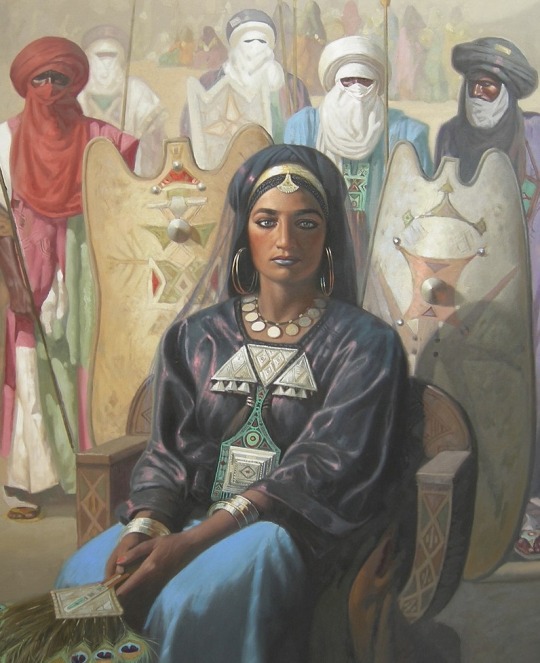
(Painting of The Queen Tin Hinan by Hocine Ziani)
The Queen Tin Hinan, also known as Queen of the Hoggar, is a legendary woman that lived in the 4th Century whose skeleton was found in a pre-Islamic tomb in the Ahaggar Mountains. The literal meaning of Tin Hinan is “she of the tents.” She is believed to be the ancestress of the Tuareg ethnicity of northern Africa; they call her “The mother of us all.”
As centuries went by, her character gradually faded into myth and folklore until the discovery and opening of her tomb in 1925. the discovery reaffirmed her existence. Like many centuries old legendary characters, her true origin has become shrouded in mystery. Sadly without any real documented evidence because the Tuaregs of that time did not keep written records, oral narratives by the locals is a key option in retracing her history.
There are sources that say Tin Hanin was a princess driven from the Northern Sahara, and after a near-death journey through the Sahara Desert with her entourage, they reached the desert anthill where luckily they found grain.
Some say she was a Berber moslem who came from the Tafilalt oasis. with her maidservant Takamat. that she might have had a daughter called Kella. they settled in the mountainous region of Algeria. There is no record anywhere of her tribe, whom her husband or lover was, why she migrated to Hoggar, whom her parents were or the cause of her death.
Takamat had two daughters. Historians believe Tin Hinan gave the Oasis of Silet and Ennided to the two daughters of Takamat which til present day belongs to the descendants of the two women.
LEGEND
Tin Hinan accomplishments were no mean feat. As a woman coming from a foreign land she had to establish herself in the new territory and judging from history’s treatment of women during those times one can only imagine her level of wisdom, Intelligence, courage and endurance as she overcame opposition, won the hearts of the people, united them and rose to become their queen.
She was regarded as a fearless warrior; many Tuaregs today refer to her as the African Amazon Queen. She possessed a knowledge of herbs for healing and medicinal practices, taught her people poetry and the Tifinagh alphabet. Her greatest achievement was founding, uniting the Tuaregs and establishing a kingdom in the Hoggar. Her daughter Kella is widely judged to be the founder of the Kel Rela Tribe.
Under the leadership of Queen Tin Hinan, the Tuaregs established essential caravan trading routes through which they built great wealth and economic prosperity throughout the 4th and 5th century.
TIN HINAN TOMB
It was not until 1925 that Tin Hanin resurfaced again. A Polish American archaeologist Byron Khun De Porok unpopular within the science community at the time and dubbed “The Tomb Raider” discovered her tomb at the Hoggar regions of Abalessa in Southern Algeria.
It was a Circular stone structure on a hill with a height of about 4 meters and a diameter of about 23 meters overlooking a dried river bed. It contained a number of rooms but only had one entrance.
Upon opening her tomb, Byron found the remains of the queen lying on her back legs crossed and covered with a red cloak of leather that had since turned to dust; she lay on a wooden litter her head facing east and was heavily adorned with gold and jewels. She wore seven silver and seven gold bracelets on her left and right arms respectively and a necklace of gold and pearls. A separate silver bracelet and a Gold ring were placed beside the body. Other funerary items and many pieces of jewelry like beads of turquoise, garnet, amazonite, and cornelian were also discovered in the tomb.
In the 1960s, the anthropologist E. Leblanc examined the skeleton within the Tin Hinan tomb. He observed that the remains were tall (1.72 to 1.76 meters tall) and lithe, with a narrow pelvis, broad shoulders and slender legs.
Today her remains can be found in the Bardo Museum of Algiers.
0 notes
Text
youtube
The Tuareg group Imarhan announces the album “Aboogi”

The musicians unveil "Achinkad", a superb first track from their third album recorded with a host of guests such as Gruff Rhys from Super Furry Animals and Sudanese singer Sulafa Elyas.
It was in their hometown of Tamanrasset, in the Hoggar mountain range in southern Algeria, that the members of Imarhan built their recording studio after the release of their second album Temet in 2018. While other Tuareg musicians recorded in the United States, the quintet led by singer Iyad Moussa ben Abderrahmane captured all the diversity, beauty and difficulties of life in the Tuareg capital.
For this first "local" work, the group chose the title Aboogi , named after the first semi-permanent structures that their nomadic ancestors built when establishing colonies and villages. A new gem from contemporary and mixed-race Assouf mixing poetic and militant lyrics with a fusion of folk, rock and hypnotic groove.
Source: Radio France FIP
0 notes
Text










algeria 1982 / 020423
in 1982 i tried to hitch from algiers / algeria
to bamako / mali
i ended up in tamanrasset
remembered images from the hoggar mountains
752 notes
·
View notes
Text

Ancient mural of African dancers with afros, Hoggar Mountains, Algeria Central Sahara, 10,000 bc.
#History101 #blueprinthealthghana #africa
0 notes
Text
Ф Declare Hoggar mountain massive 🗻 matrimoine and filoine of humanity at Morocco 🇺🇳🌍🇲🇦🌟⚪

0 notes